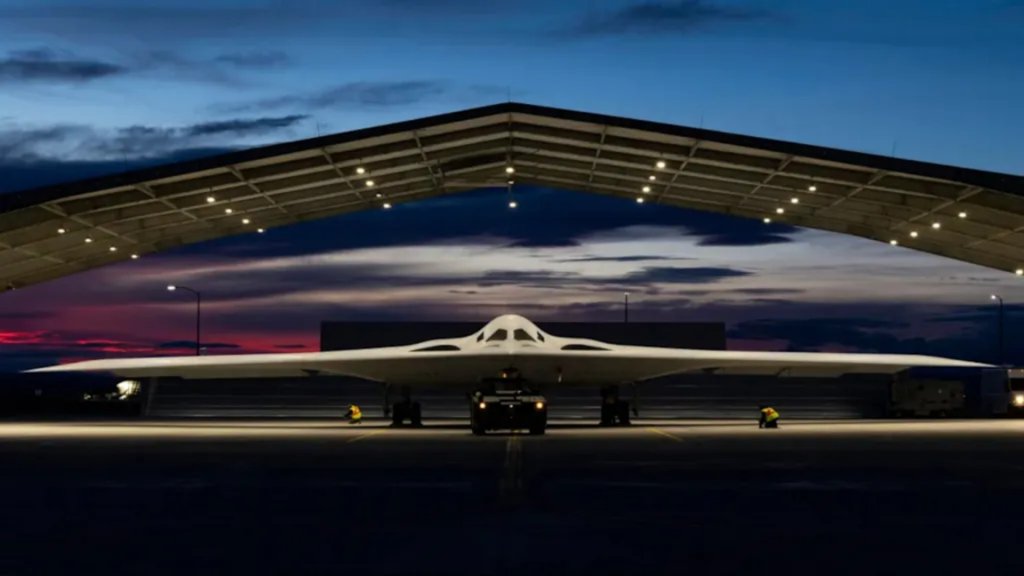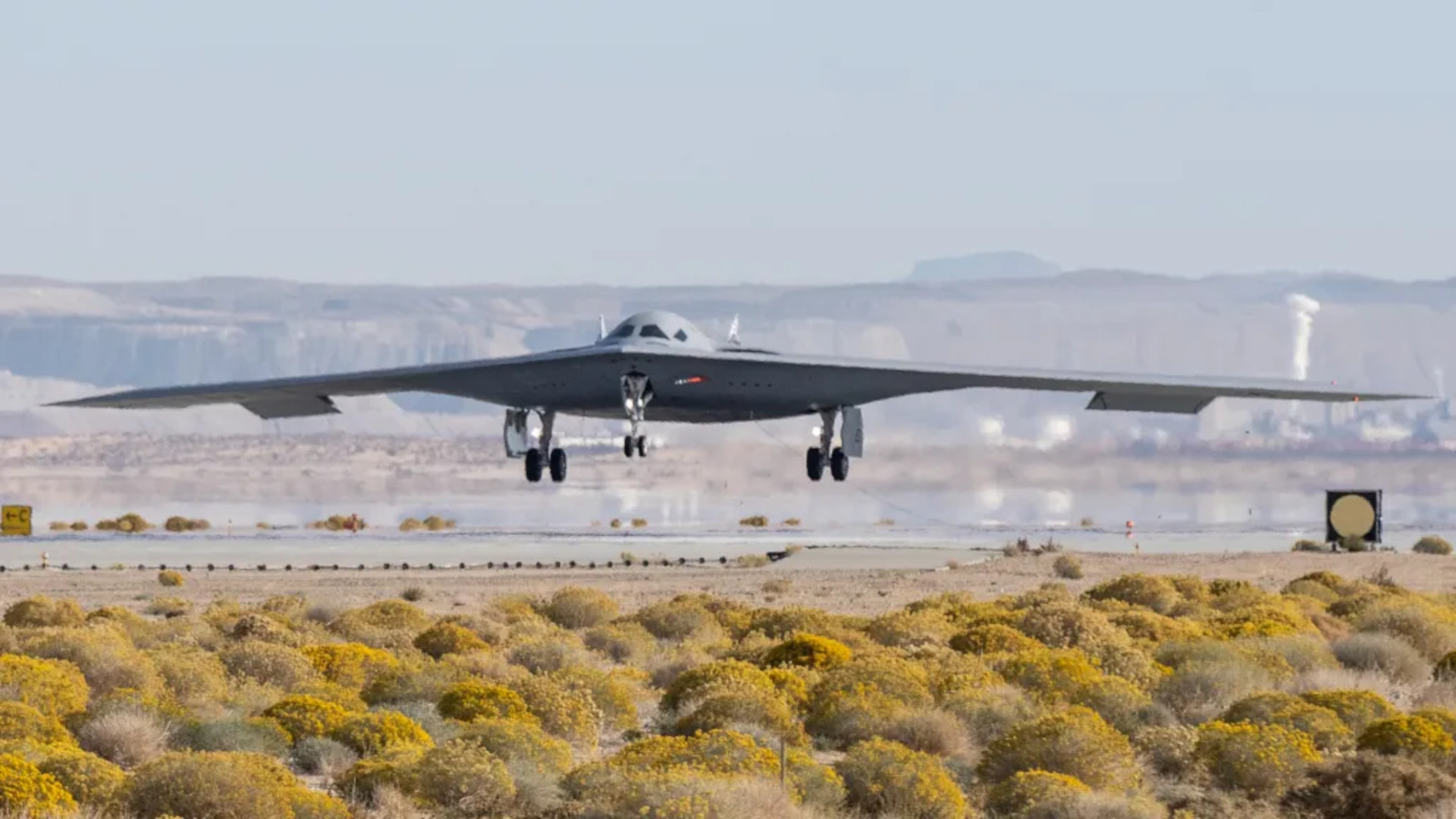The U.S. Air Force has not ruled out expanding the roles and missions of the B-21 Raider stealth bomber as part of its ongoing reassessment of plans for a new crewed sixth-generation stealth ‘fighter.’ This is not the first time the service has at least alluded to the possibility of an air-to-air combat role for the Raider.
Air Force Chief of Staff Gen. David Allvin talked about the B-21 and the future of the sixth-generation combat jet that has been under development as part of his service’s Next Generation Air Dominance (NGAD) initiative earlier today at the 2024 Military Reporters & Editors (MRE) Conference. The plans for the NGAD aircraft, also sometimes referred to as the Penetrating Counter-Air (PCA) platform, are currently undergoing a deep review. Concerns about very high expected costs – individual fighter-like NGAD aircraft potentially costing $300 million or more apiece – have been cited as the central driver behind the reassessment.

“We intend to have that by December,” Allvin said when asked about the timeline for when the NGAD combat jet review is expected to be finished. “We also want to be able to influence the… [proposed] budget submission in February. So, obviously, all that has to go through DOD [the Department of Defense]. So we’re looking to have the results in December.”
“As the NGAD review goes forward, like, is it possible that what that ends up with could be the B-21 taking a larger role?” Defense News‘ Stephen Losey asked Allvin later in his talk.
“We have not taken that off the table,” the Air Force’s top officer said in response.
Allvin did not elaborate on what this might mean for the B-21, but as already noted, this is not the first time the possibility of an ‘air dominance’ role for the Raider has come up.

“If we were to characterize it [NGAD] as a fighter, we would be… thinking too narrowly about what kind of airplane we need in a highly contested environment,” then-Air Force Maj. Gen. Scott Pleus, told what was then Air Force Magazine back in 2019. “A B-21 that also has air-to-air capabilities” and can “work with the family of systems to defend itself, utilizing stealth – maybe that’s where the sixth-generation airplane comes from.”
At the time, Pleus was Director of Air and Cyber Operations for Pacific Air Forces (PACAF), the Air Force’s top command in that region. Now a lieutenant general, he is currently Director of Staff at the Air Force’s Headquarters at the Pentagon.
It remains unclear whether Pleus’ 2019 comments explicitly reflected an idea for employing the B-21 in air-to-air combat, or if he was referring to a similarly sized and/or otherwise capable aircraft. Renderings of very stealthy tailless designs, like the one below from Lockheed Martin, have historically been used to illustrate discussions about the NGAD combat jet.

At the same time, as The War Zone has explored in detail in the past, the B-21’s size, long range, high-altitude ceiling, broadband low-observability (stealthiness), and other capabilities could actually make it well suited to supporting certain forms of air-to-air combat. The Raider has the potential to serve as a launch platform for air-to-air missiles, especially outsized very long-range types. Its payload capacity would give it the ability to carry a large volume of smaller air-to-air missiles, as well. B-21s could also employ air-to-ground munitions in support of the suppression and destruction of enemy air defenses mission (SEAD/DEAD), which is also part of the air superiority equation.
Maybe most significantly, the B-21s could also act as airborne nerve centers in support of counter-air missions, especially for controlling drones like the Air Force’s planned fleets of Collaborative Combat Aircraft (CCA), and have the ability to do so even in the most heavily contested of airspaces. Uncrewed aircraft, in turn, could feed targeting data back to Raiders with air-to-air loadouts. B-21s might even be able to launch some of those drones themselves.
The video below from Collins Aerospace offers a good visual depiction of how CCA-type drones might work together with crewed aircraft in an air-to-air combat scenario, including by extending the sensor reach of the entire force.

“What is the role, if any, of a CAA in consonance with the B-21 as it’s fielded?” then-Air Force Lt. Gen. James Slife, at the time Deputy Chief of Staff for Operations, asked rhetorically at the annual Defense News Conference last year. “We should we should keep our options open for how we employ them going forward.”
Gen. Slife is now Vice Chief of Staff of the Air Force.
Labeling the B-21 as simply a bomber is already something of a misnomer.
“The B-21 is multi-functional,” Secretary of Defense Lloyd Austin said at the roll-out ceremony for the first pre-production Raider in December 2022. “It can handle anything from gathering intel to battle management.”

How any increased role for the B-21 might impact broader plans for the Raider is unclear. Allvin took the time today to push back on comments this week from Kathy Warden, CEO of Northrop Grumman, the prime contractor for the B-21, about possible changes on the horizon to the planned Raider force structure. The Air Force’s publicly stated plan remains to buy 100 of these aircraft.
“I can see that being something in the future [that changes]. …we do not currently have a plan to do that in the next month or two,” Allvin said. “I think we’ll understand more about it [as testing proceeds] that will give us more confidence [about fleet size].”
“But there’s also going forward to understand the capability, the capabilities that are bearing out, along with the price point,” the Air Force Chief of Staff continued. “So far, the program has been run very well, and so the usual price ballooning we haven’t seen.”
“We do not have that on the front burner right now to re-evaluate” the planned B-21 fleet size, he added.
In April, Allvin had also told members of Congress that 100 B-21s was still the plan, as well as that his service was already looking ahead to augment the Raiders with new capabilities.

It is important to stress that the reassessment of the NGAD combat jet plans is ongoing and we know it is intended to be exhaustive. Secretary of the Air Force Frank Kendall has talked repeatedly now about how the service is also considering a significantly cheaper (and similarly less capable in certain regards) crewed stealth aircraft focused primarily on the drone controller mission as another alternative. You can read more about what that plane could look like here.
With the Air Force hoping to have the completed review of its NGAD ‘fighter’ plans in hand before the end of the year, it might not be too long before more details about its conclusions, and how they may or may not relate to the B-21, start trickling out.
Contact the author: joe@twz.com
